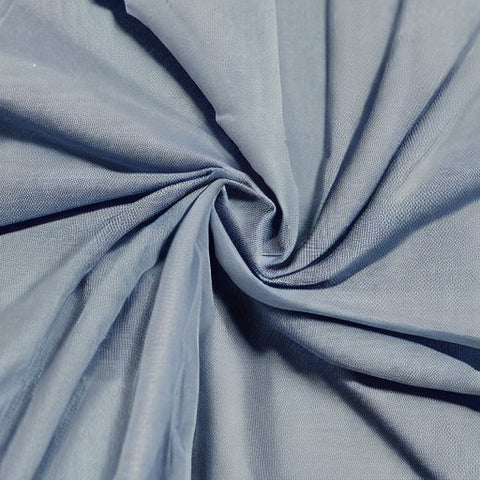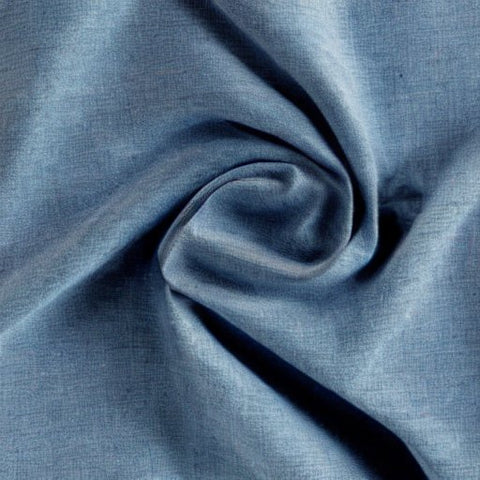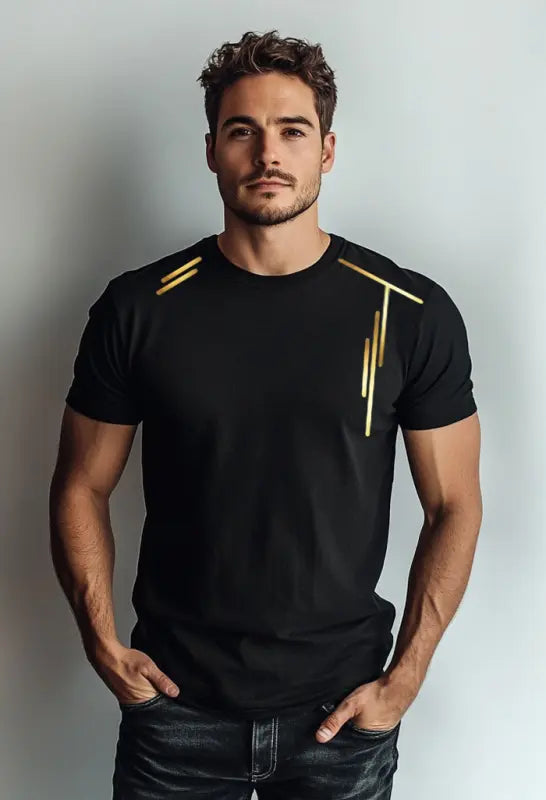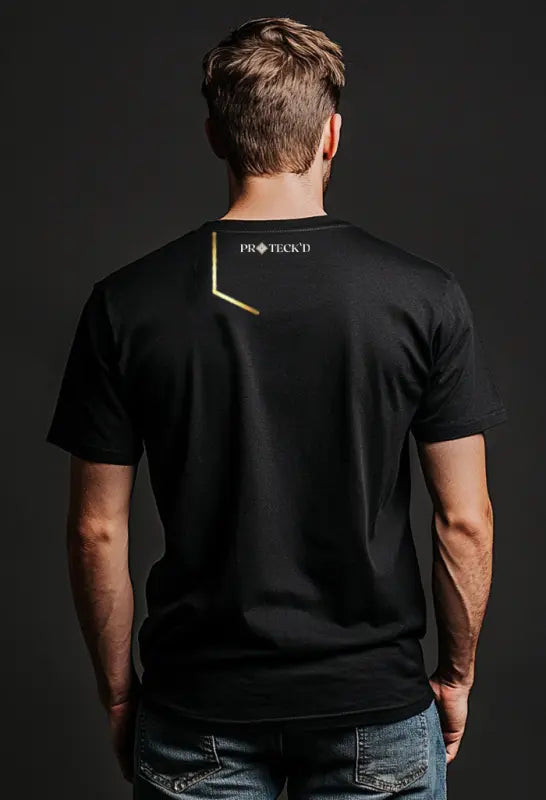What exactly is viscose?
One of the most well-known and widely used types of fabric all over the globe is viscose. It has the same qualities as polyester in that it is lightweight, breathable, and pleasant to the touch, but it also maintains its form like cotton.
During the creation of this semi-synthetic fabric, it passes through a number of different chemical processes. The fabric itself is created from wood pulp. This indicates that it is not always fully favorable to the environment.
Viscose is produced from wood pulp. In certain circles, it is also referred to as rayon or viscose rayon. The treatment of wood pulp with chemicals in order to produce a viscous solution is one step in the manufacturing process of viscose. This solution is then forced through very small pores in order to produce long fibers. After that, the fibers are transformed into yarn, which may be knitted or woven into cloth.
What does viscose refer to:
- One sort of semi-synthetic fiber is called viscose, and it is produced from wood pulp. In certain circles, it is also referred to as rayon or viscose rayon.
- The treatment of wood pulp with chemicals in order to produce a viscous solution is one step in the manufacturing process of viscose. This solution is then forced through very small pores in order to produce long fibers.
- Viscose is a popular option for use in garments as well as other types of fabrics due to its pliable nature, low weight, and high level of breathability.
- Because of its comparable drape and feel, it is often utilized in place of cotton or silk in a variety of applications.
- Viscose is a multipurpose material that may be used into a wide range of items, including but not limited to garments, upholstered furniture, and even certain medical supplies.
- It is particularly well-known for its capacity to absorb and keep the color of dyes that are applied to it, which makes it a popular option for the production of colorful fabrics and garments.
- However, viscose may also be prone to shrinking, pilling, and wrinkling, and it may need extra care when it comes to cleaning and storing the material.
- Because it is created from biodegradable and renewable wood pulp, viscose is seen as a more environmentally responsible option than other types of synthetic fibers. However, if the chemicals employed in the manufacturing process are not adequately handled, they have the potential to cause damage to the surrounding environment.
- It is essential to be aware that viscose may be marketed and sold under a variety of names, such as rayon, viscose rayon, and fake silk. Consumers need to make sure they are buying sustainable and ethical items by reading the labels on the products they buy and doing their own research.
How is Viscose Made?
Viscose is produced by a multi-step process that includes transforming wood pulp into a fibrous fiber. The end product is called viscose. The following are the stages that make up the process:
- Dissolving the wood pulp: The process of dissolving the wood pulp involves treating the wood pulp with a combination of chemicals in order to produce a solution that is viscous.
- Extrusion: After that, the viscous solution is forced through a series of tiny holes using an extruder to produce long, thin strands.
- Spinning: After the fibers have been separated, they are either woven into fabric or spun into yarn.
- Finishing: In the last step, known as "finishing," the product is subjected to a number of different chemical treatments in order to produce the required texture, strength, and other attributes.
Characteristics of Viscose
Viscose is a popular option for use in garments as well as other types of fabrics due to its pliable nature, low weight, and high level of breathability. Because of its comparable drape and feel, it is often utilized in place of cotton or silk in a variety of applications. The following is a list of some of the features that viscose possesses:
- The clothing is supple and easy on the skin.
- Lightweight and airy in construction.
- Because it is able to absorb and hold colors effectively, it is well suited for use in the production of colored fabrics and garments.
- Adaptable to a wide range of applications and able to be used for a number of items, including apparel, upholstery, and even medical supplies.
What are some of the benefits and drawbacks of viscose?
Utilizing viscose comes with its own set of benefits as well as drawbacks, just like any other kind of material.
Advantages:
- The clothing is supple and easy on the skin.
- Able can be used to a wide range of items thanks to its adaptability.
- Cost-effective in comparison to natural fabrics such as cotton or silk.
- Because it is able to absorb and hold colors effectively, it is well suited for use in the production of colored fabrics and garments.
- Because it is created from renewable wood pulp, it is both biodegradable and kind to the environment.
Disadvantages:
- Easily susceptible to shrinkage, pilling, and wrinkle formation.
- It is necessary to take extra precautions while cleaning and storing it.
- Can be more susceptible to damage than other materials due to its potentially lower strength.
- If the manufacturing process chemicals are not effectively handled, they have the potential to cause damage to the surrounding environment.
The Effects of Viscose on the Environment
Because it is created from biodegradable and renewable wood pulp, viscose is seen as a more environmentally responsible option than other types of synthetic fibers. However, if the chemicals employed in the manufacturing process are not adequately handled, they have the potential to cause damage to the surrounding environment. Some viscose producers have come under fire for the pollution that has been generated as a result of the manufacturing process. In particular, the discharge of harmful chemicals into rivers has been singled out for criticism.
It is a fiber that is created by man
A man-made fiber derived from plants, viscose is created by extracting cellulose or wood pulp from trees with a rapid growth rate and high regeneration capacity, such as eucalyptus and beech. However, despite the fact that it is better for the environment and more sustainable, the process of making viscose may be hazardous to both the employees and the environment.
There are still certain harmful chemicals used in the production process of viscose, which may have a severe impact on factory employees as well as surrounding populations, despite the fact that some manufacturers do utilize ecologically friendly manufacturing procedures for their viscose. As an example, the hazardous chemical carbon disulfide is often used in the process of converting cellulose into viscose fabric.
In addition, the usage of these chemicals contributes to the contamination of the water and air in the areas around the plants where they are produced. Because of this, many of the businesses that manufacture viscose are switching to manufacturing techniques that are friendlier to the environment and do not result in the contamination of either the air or the water.

This new generation of viscose is often produced using renewable resources like eucalyptus trees or bamboo plants as the raw material. Some producers, such as Vitamin A, have developed swimwear and leisure wear made from viscose and recycled nylon that was produced in a sustainable manner, as well as natural fibers.
The material may be woven, knitted, or embroidered into a wide range of garments and other sorts of materials. It is smooth and silky to the touch and drapes well, giving it a very chic appearance.
Because it is absorbent and breathable, it is an excellent choice for use in warm weather. It also has a wonderful handfeel and is hardwearing, which means that you won't have to worry about it breaking down in the wash since it is really durable.
Viscose fibers, in contrast to cotton fibers, are at their most fragile state when they are wet, thus it is important to handle them carefully. Using a gentle detergent and washing the items by hand is the most effective method for cleaning viscose. As a more eco-friendly alternative, you can even hang them outside to dry.
Some companies, such as Vitamin A, are beginning to produce viscose goods using a method known as closed-loop production. This method ensures that any harmful byproducts of the manufacturing process are removed, neutralized, or recycled rather than being released into the environment. The present ways of making viscose, which may have a detrimental influence on the environment, have been replaced with this far more creative and ecologically friendly approach to the textile production process.
This is a significant advance for the viscose sector, and it will assist in the protection of employees as well as the families of those workers. However, it is important to note that while some viscose fabrics are now being produced in more environmentally friendly ways, many of the current production methods still result in air and water pollution. Because of this, we recommend shopping for viscose products that are made from materials that are either regenerative or recycled.
It is a completely natural fabric
Dresses, upholstered furniture, and carpets are some of the most typical applications for viscose, which is a semi-synthetic fabric. It is also a popular fabric that may give the impression of being made of silk, both in appearance and texture.
Cellulose is a form of fiber that may be found in both plants and certain animals, and it is used to make this material. Additionally, it may be found in several kinds of fruits and vegetables.
Cellulose is the major component of plant cell walls and is primarily responsible for the structural integrity of plants. It is also possible to create other kinds of fibers, such as viscose rayon and cellulose acetate, using this material.
The production of viscose begins with the extraction of cellulose in the form of wood pulp, which is a natural occurring substance. Following the dissolution of the pulp in the chemicals, it is spun into threads that may be used to produce textiles.
Fabrics such as shirts, blouses, and skirts are created using knitting and weaving techniques using these yarns. The cloth that is produced as a consequence is smooth and glossy, and it may be used for many years without becoming worn or displaying indications of damage.
However, there is a catch: viscose may not always be the best option when thinking about the environment. Some of the manufacturing procedures for viscose include the use of hazardous chemicals including carbon disulfide and ethylene glycol, both of which have been associated with an increased risk of cancer as well as a variety of other adverse health effects.
There are, however, alternate methods of producing viscose that are less damaging to the environment and more sustainable. There are even organizations that are working toward the goal of cleaning up the supply chain and persuading businesses to be more open about the procedures they use in their production processes.
When it is manufactured correctly, viscose is a natural fabric that may be awarded the organic label by organizations that are managed independently or by the government. In addition, it is a substitute for synthetic fibers, which are manufactured using chemicals that are hazardous to human health and have a detrimental effect on the natural environment.
The term "artificial silk" is often used to refer to this particular kind of cloth. It is a less expensive alternative to cotton or silk, which makes it suitable for use in the production of trendy clothing and other accessories. It is also possible to blend it with other natural fibers to produce a garment that is more elastic and long-lasting.
The manufacturing process of viscose starts with the extraction of cellulose from brown wood pulp. After the wood pulp has been treated with caustic soda, it is first dissolved in chemicals in order to eliminate any contaminants. Because of this, the wood pulp is a clean raw material that may be used in the production of viscose.
It is a renewable source of fiber
Fabric known as viscose is created from cellulose, which is a basic element that may be found in wood pulp. Because it is biodegradable and its production does not involve the use of petroleum, it is an environmentally beneficial fabric. It is also an excellent substitute for cotton or wool due to the fact that it dries very quickly and has a climate-regulating effect.
Even though viscose is produced from a material that can be replenished, the manufacturing process for it often has negative effects on the surrounding ecosystem. To begin, the manufacture of traditional viscose involves the usage of a significant amount of wood pulp that is obtained from endangered forests. This gives rise to environmental concerns over the destruction of forests and the loss of biodiversity.
The wood pulp is then subjected to a chemical treatment in order to transform it into a material that can withstand the rigors of repeated use and laundering. Sulfuric acid, sodium hydroxide, and carbon disulfide are the three components needed for this labor-intensive and time-consuming procedure.
These chemicals, as stated by the Changing Markets Foundation, may be harmful to factory employees as well as the workers' families, and they can even damage the waters in the surrounding area. Thankfully, new techniques for the production of viscose are constantly being developed.

For instance, a recently developed method known as the Lyocell method does away with the need of using the hazardous carbon disulfide step and instead dissolves cellulose in N-methylmorpholine N-oxide (NMMO). Due to the low amount of waste products that are generated by this approach, the viscose is produced in a manner that is friendlier to the environment.
The manufacture of viscose may also be accomplished via the use of a closed-loop process, which recycles almost all of the water and chemicals that are necessary for the process. Because of its commitment to preserving the environment, this technique, which is known as Ecovero, was awarded the EU Ecolabel.
Because of this, Ecovero has a far less effect on both emissions and water compared to standard viscose, which is one reason why it is an environmentally responsible option for your next wardrobe refresh. In addition, the manufacturing process used by Ecovero is open and transparent, which means that you can be certain that you are aware of precisely where your viscose originated and how it was manufactured.
Even though this sort of environmentally friendly viscose has a few drawbacks, it is a great place to begin building a sustainable wardrobe since it is so versatile. Because of its ability to decompose naturally, its capacity to absorb liquids, and its suppleness to the touch, it is an ideal option for the garments you wear on a daily basis.
In point of fact, those individuals who are seeking for a more environmentally responsible alternative for their wardrobe are increasingly gravitating toward the use of this particular sort of viscose. This is due to the fact that it has a number of beneficial properties, such as the ability to absorb up to 400 percent of its own weight in moisture and to dry out very rapidly. In addition, it is suitable for use even on sensitive skin due to the absence of any petroleum.
It is a kind of man-made fiber
Viscose is a man-made fabric that has the appearance and texture of silk, but it is really manufactured from cellulose, a material that comes from plants. Because it is so much more affordable than cotton, it is often used as an alternative to more costly and delicate textiles. This is one reason why it is so popular.
In its early days, viscose was developed as a man-made alternative to silk, and it quickly became popular due to its silky texture and fluid drape. It is a well-known textile that is not only used in the production of blouses, skirts, and dresses, but it is also often combined with other fabrics in order to impart stretch.
A excellent option for apparel to wear throughout the warm summer months, this fabric is not only pliable but also wicks away sweat. It does not act as a heat trap, and it is lightweight enough to be worn over a jacket or a shirt with long sleeves. Additionally, it dries fast and is capable of preventing the fading of dyes.
Nevertheless, there are certain problems with the procedure that is used to make viscose. The vast majority of viscose is made by dissolving wood pulp and then treating it with chemicals; this process results in the emission of hazardous substances into the air and water in the area around manufacturing facilities. A number of the chemicals that are used to break down the cellulose are very hazardous, and some of them have even been linked to higher incidences of heart disease and cancer in those who deal with the substance.
Another approach to create viscose is by using a technique known as Lyocell, which involves dissolving cellulose in a substance that is less hazardous to human health. This technique is a more sustainable alternative that is utilized in the production of the well-known Tencel fabric in the United States.
Lyocell is a much more environmentally friendly alternative to viscose since it does not include the use of any chemicals that result in the production of carbon disulfide. This is a problem that affects both the environment and the health of humans, and it's one of the reasons why eco-friendly campaigners have been focusing a lot of attention on viscose in recent years.
An American corporation made the discovery of a method in 1972 that gets rid of the carbon disulfide, making it possible for cellulose to directly dissolve in the N-methylmorpholine N-oxide solution, which is less poisonous (NMMO). This was created as a safer and more environmentally friendly alternative for the production of viscose, and it is today used by businesses located all over the globe.
In comparison to the process of dissolving pulp, this way of creating viscose is safer for the environment and has a lower risk of hazardous exposure; yet, it is still a contentious approach. In addition to this, it throws away around 70 percent of the wood, which means that it is not as environmentally friendly as it might be.


















































Leave a comment